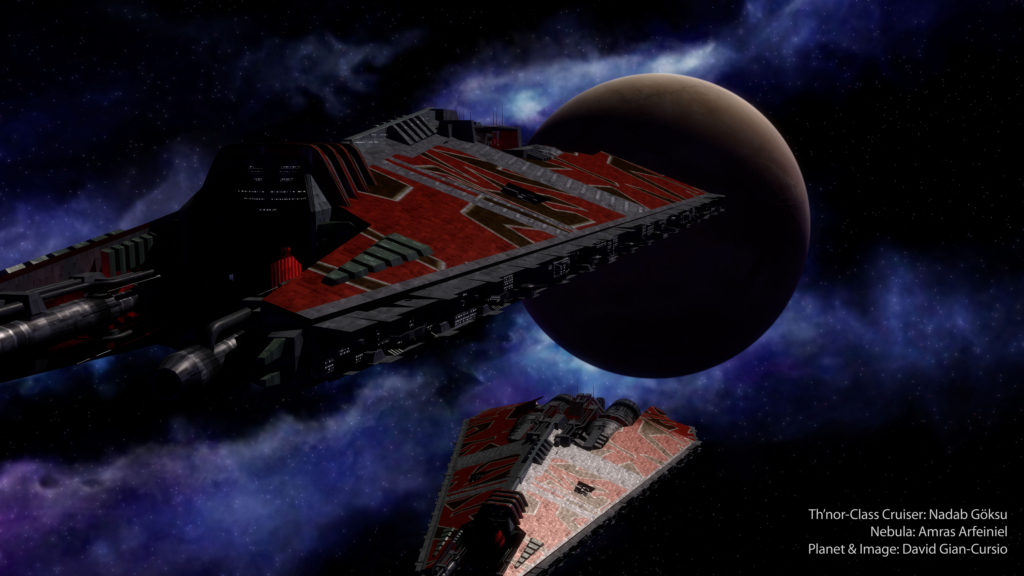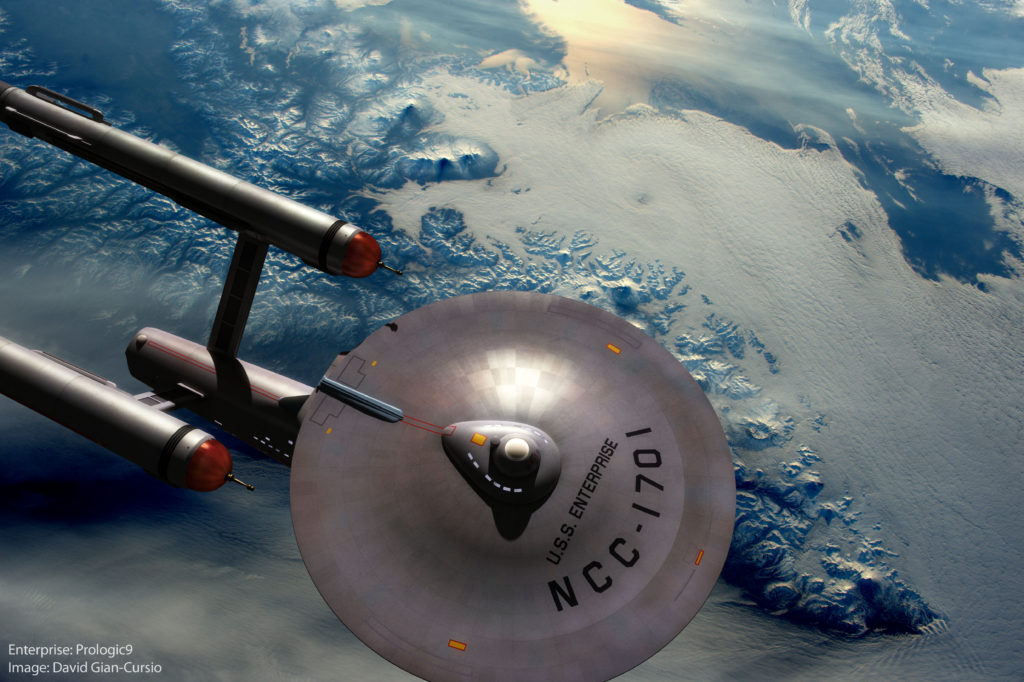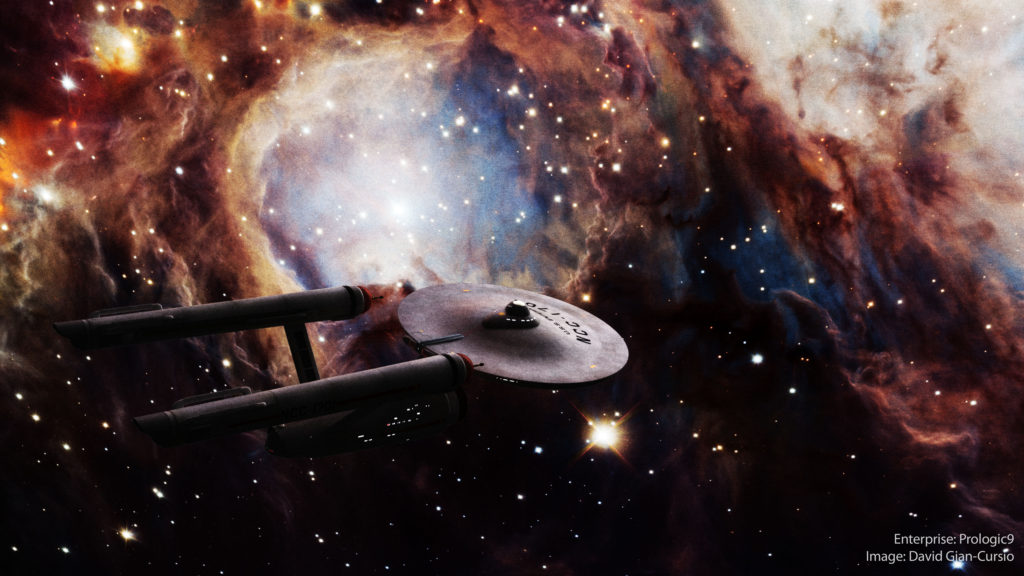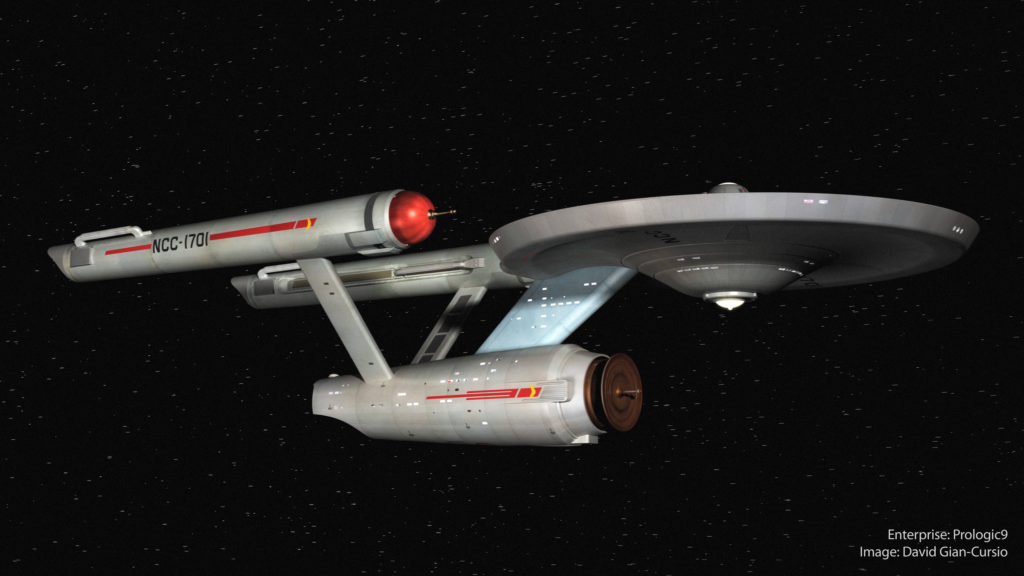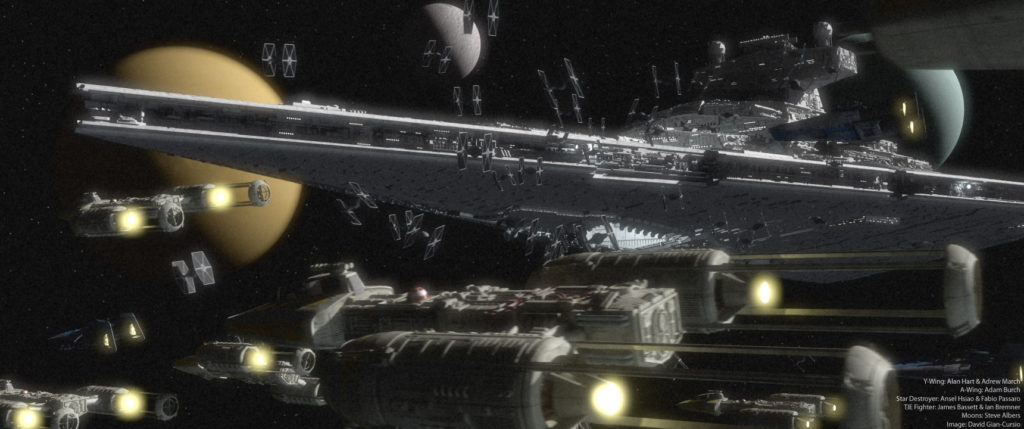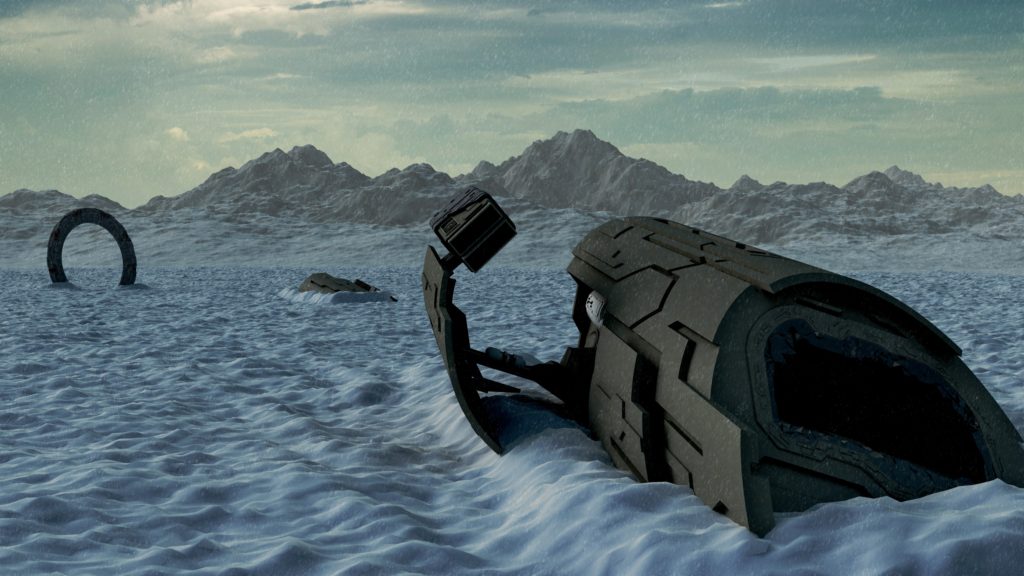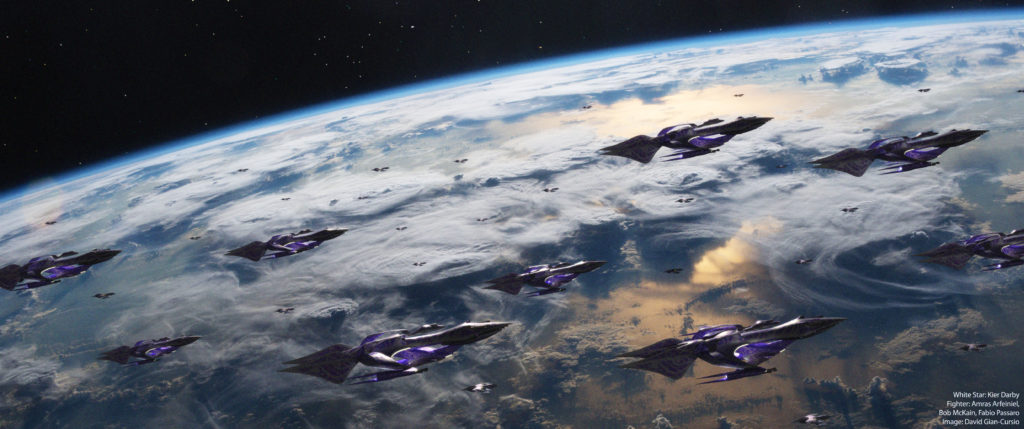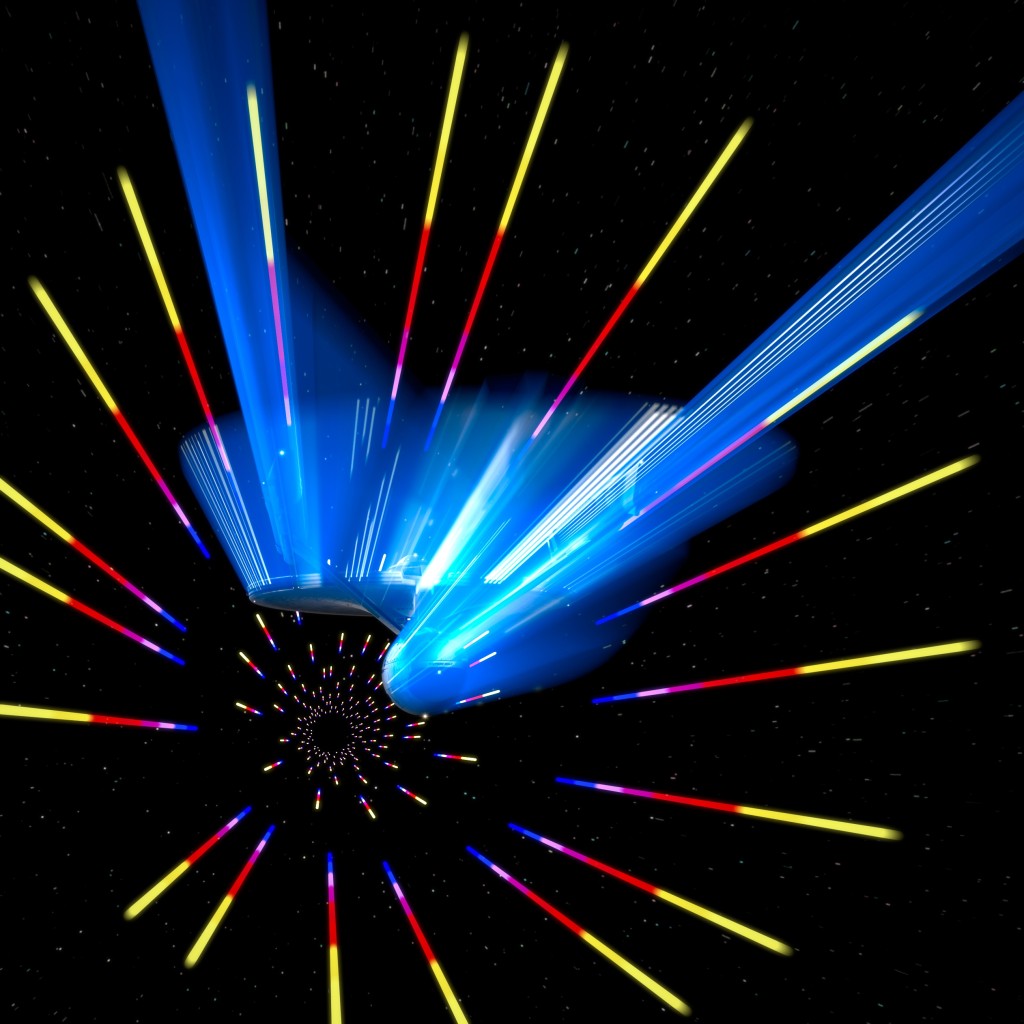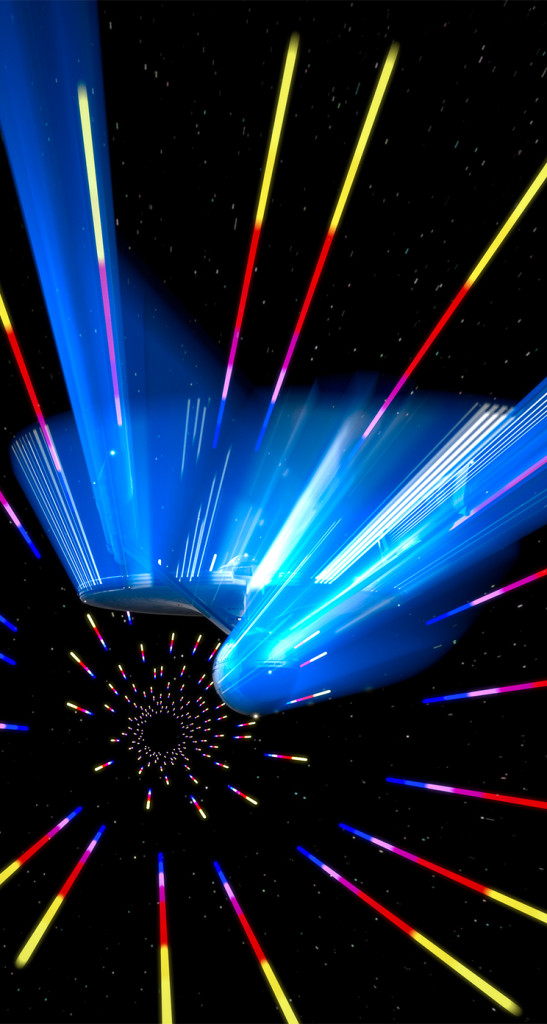While I was visiting home, I took the opportunity to look through some old copies of Starlog magazine from when I was a kid to find some paintings of the TOS-era Enterprise I remembered. It turned out I was looking for issue 195’s article on David Mattingly’s work, but while I was flipping through, I found one that hadn’t stuck in my mind, before. An article in the September ’92 issue, about a Sci-Fi TV series just entering production called Babylon 5. Judging by the article’s content and what I can figure of the production schedule based on the JMSNews archive, it looks like the article was put together in early summer at the latest; none of the actors are mentioned, some of the characters use their pitch-brochure names or titles (Jakarr, Vice-Commander Takashima), and most of the pictures are illustrations from the pitch document. However, there are three CGI test shots that look to be Foundation Imaging (or, at least, Ron Thornton) originals; a shot of the “Green Ship” transport, a ball-shaped ship that may have been inspired by the moon lander from 2001: A Space Odyssey, and a shot of two space cruisers near a planet. Continue reading
Category Archives: Photoshop
100 Days, 100 Renders— Day 7
One full week!
I’m not sure there’s anything that’s done as much for sci-fi art as having people living full-time in orbit with a giant window and high-quality digital cameras. The background is from a photo by astronaut Tim Peake. The composition is inspired on an image of the Voyager by Mojo Lebowitz for the Ships of the Line calendar (which also was used as the cover of the novel “Full Circle”).
100 Days, 100 Renders— Day 6
As promised, another image from the days of Captain Pike. The background is a photo of the Orion Nebula I was pointed to by a blog post by the Bad Astronomer, Phil Plait.
I experimented with a variation of image-based lighting on this one. The only light source is the plane with the image of the nebula applied to it. I rendered it three times with the Photoshop render buffer export plug-in active, with the nebula set to different degrees of luminosity. I then mixed and matched passes from all three to get the final image to precisely control the look of the ship. The brightest version contributed the diffuse lighting, the medium version gave me the reflection and specularity, and the regular intensity supplied the nebula itself as it appears in the image.
While I was play with my post-processing, I experimented with a more intense, contrasty look than I usually go for, which reminded me of the original 1960s visual effects in Star Trek, and how the occasional astronomical background they used would look after being optically composited.
100 Days, 100 Renders— Day 5
My original idea for my traveling project was to attack the most recent version of the Babylon 5 hyperspace effect on the plane ride, as seen in 2006’s “The Lost Tales.” It’s an intriguing mix of straightforward (since I can recognize it’s built out of standard Lightwave procedural textures and deformed geometry) and tricky (since there was only one shot of it in the movie, making it hard to deduce more specifics about it).
However, on Wednesday, it was announced that the new Star Trek television series, Discovery, would be taking place roughly a decade prior to the Original Series, during the same time as the adventures of Captain Pike. So instead, I spent my flight redressing Prologic9’s Constitution-class model to resemble the studio models that were used during the filming of Star Trek’s first pilot. My main sources of reference were screencaps from “The Cage,” the Casimiro blueprints, as well as this blog which goes into some detail on the different variations of the original Enterprise design seen over the course of 50 years of Star Trek. That’s where I learned about the blue tint on the ship’s neck which is an interesting variation on the design that I’m trying out. Other differences between the ship’s original version and the more familiar series configuration are a taller bridge, wider deflector dish, a different font for the hull markings, more decals on the top of the saucer, different endcaps on the tails of the nacelles, and gold spikes in the center of the forward nacelle domes. The model was originally unlit, and in the second pilot, while window lighting was added, the nacelle domes remained solid red. I’m assuming that’s why, when the visual effects of the original series were redone for the Blu-Ray release, the pilot version of the model had unlit domes, even though they did light the windows in “The Cage.” I disagree, and split the difference by darkening the domes and reducing their glow and transparency, but still allowing some of the series-style lighting effect through.
100 Days, 100 Renders— Day 4
One of the ideas I’ve jotted down for this project is “Crazy, Star Trek Beyond wide-angle, upside-downy stuff,” which I have a feeling is a well I may visit more than once. Yesterday, I ended up with a bit less time to work than I hoped, since I decided to pull some reference material off of a blu-ray for a possible future modeling project and that took up a chunk of my 3D-time. I went with something quick-and-dirty, but it ended up looking pretty good. Star Trek Beyond had a fun shot of the Enterprise launching from a space station where the camera was locked at the base of the ship’s neck, and we see the lights of dock blur into a Quanstquatti-esque kaleidoscope as the ship accelerates past them. Continue reading
100 Days, 100 Renders— Day 3
And now, my first tiny render.
It’s probably not a coincidence that with my rendering fewer images, I haven’t developed a feel for render times using Lightwave’s new(ish) quality options. So far, I’ve worked on these pictures in the evening, rendered them overnight, and done the post-processing the following day. I ended up completely whiffing on my set-up when I started running the final image. Too many motion blur passes, and I also decided to throw in some global illumination just to give it that “This model was shot with plenty of fill light” motion-control look. When I got up and saw the render was nowhere near finished, I canceled it, reduced the resolution, cut down on the MB passes, and replaced the GI with a wacky constellation of spinning distant lights (which I believe was put up for download by Kat Myers originally) so I could get this out in a couple of hours. Continue reading
100 Days, 100 Renders— Day 2
I had the idea for this image a while ago, not long after I finished my Puddle Jumper model. As I recall, I got the idea looking at the cover of The Terror, a historical novel by Dan Simmons describing the horrible fate of the Franklin Expedition as the crew succumbs to the harsh environment and also some sort of bear-monster. I think that part was a metaphor for how we’ll never know entirely what happened to those people.
Anyway, I more-or-less saw it in my minds eye as you see it above. Crashed Puddle Jumper buried in the snow, askew Stargate in the background, a set of lonely, filled tracks marching back. My premise for the image is that the ship tried flying through an older gate, unaware that it had fallen prey to the elements in the years since it was last used. The Jumper emerged at an odd angle, the left wing clipped the ground and sheared off as it was extending, and the rest of it plowed into the snow a short distance away. Continue reading
100 Days, 100 Renders— Day 1
There’s an idea I’ve heard about, the Mind Palace. It’s a sort of memory exercise, where you imagine a building— library, museum, palace, whatever— and sort stuff you know information you know into different rooms. You take advantage of your brain’s natural tendency to form associations by tricking it into joining certain information to these imaginary rooms, so imagining the room also calls up everything you’ve “stored” in there. I’ve never had the patience to try it out myself, but I thought of it earlier yesterday, when I decided to embark on this project, and I found myself able to begin conjuring up shots in my minds eye, just like I used to years ago, as if the ability was behind a door in my mind I just hadn’t opened up in a while. Maybe I didn’t “lose” my mojo so much as was driven away from it. Continue reading
Battlestar Pegasus DRADIS Screens
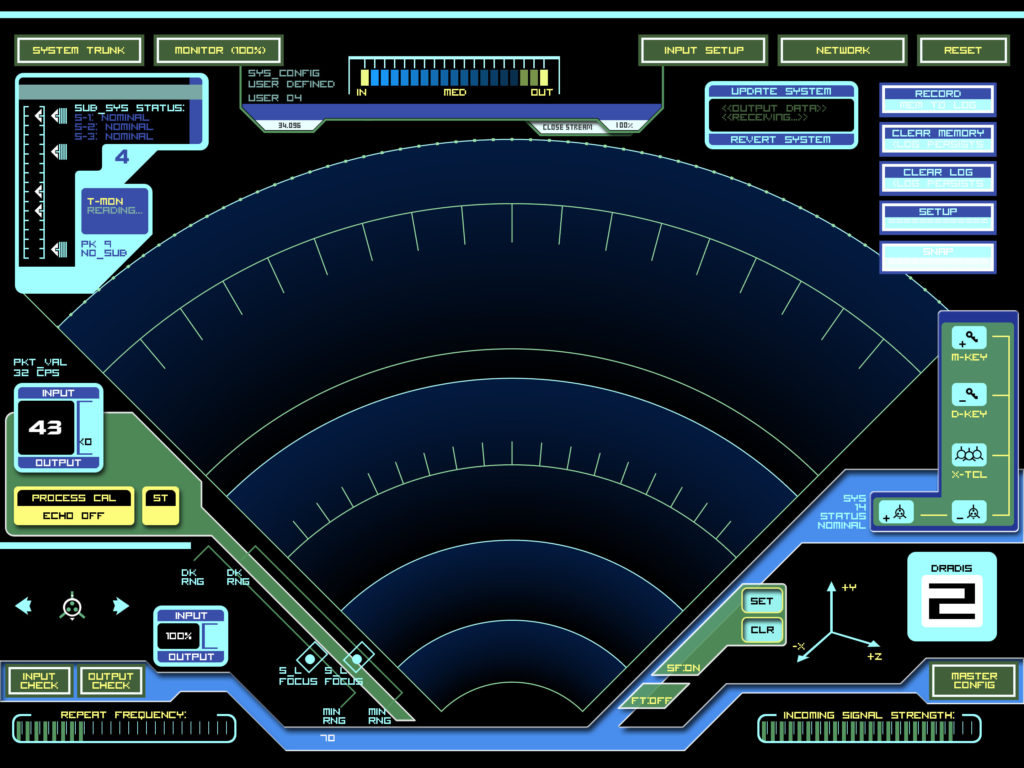
A while ago, I made a set of icons for the DRADIS displays from the new Battlestar Galactica. Another artist contributed a recreation of the actual monitors, and I built on both to make computer screens for some cutscenes in the fan-made BSG video game, Diaspora. I figure sooner or later, I’ll probably need some more BSG computer screens using the design language from the Pegasus, rather than the Galactica. I’ve had some spare time recently, so I decided to recreate the DRADIS screens from the Pegasus.
Continue reading
Warp Point Nine
After reading “Return to Tomorrow,” including a description of how the jump-to-warp effect was achieved in TMP (multiple long exposures, with the main trail coming from shooting a long exposure with blue fill lighting), I decided that I’d have to give it a shot myself, sooner or later.
Not long after, I tracked down an old render of the Enterprise-E I quite liked, “Apocalyptic Amenity,” since I kept being reminded it of it by the title of the Trek novel “Armageddon’s Arrow.” I even had it as my phone wallpaper for a while, and then felt awkward that I didn’t have any work of my own I could use on a phone, since I never do anything in portrait. I decided that I’d have to give it a shot myself, sooner or later.
So I set up a scene a week or so back. I looked up some iOS wallpaper templates (because it’s not just the screen, there’s also a margin for the parallax effect), and decided to render out a large square version that I could crop down for an iPhone, or leave as-is for an iPad, or crop to who knows what. I aligned it to leave a gap for the date and time, and so the lines of perspective would make a nice dynamic composition. Unfortunately, I didn’t know the Big iPad would become a real thing today, so it’s not quite large enough for that.
I did some test renders, and found I couldn’t get a long-exposure effect in a single render (at least, not by setting the motion blur distance to greater that 100%, attempting to have it encompass multiple frames of action). What I ended up doing was setting up an animation, setting the motion blur distance to 100% so each frame would touch to the next, and then rendering an image sequence for the length of the streak I wanted. After that, I brought them all into Photoshop as layers in a single document with additive blending, creating nice, smooth light trails.
The way I did the rainbow streaks was excessively painstaking. I took out the final warp-jump in the film, and set it as my background in Lightwave Layout. I modeled a single streak, and then painstaking rotated every one into place to match the pattern of the original after lining up my camera to the original shot. I don’t know if the streaks were in the same pattern for the other three warp shots in the film, and I don’t care. I’ll be happier not checking.
Refit-Enterprise by Dennis Bailey

